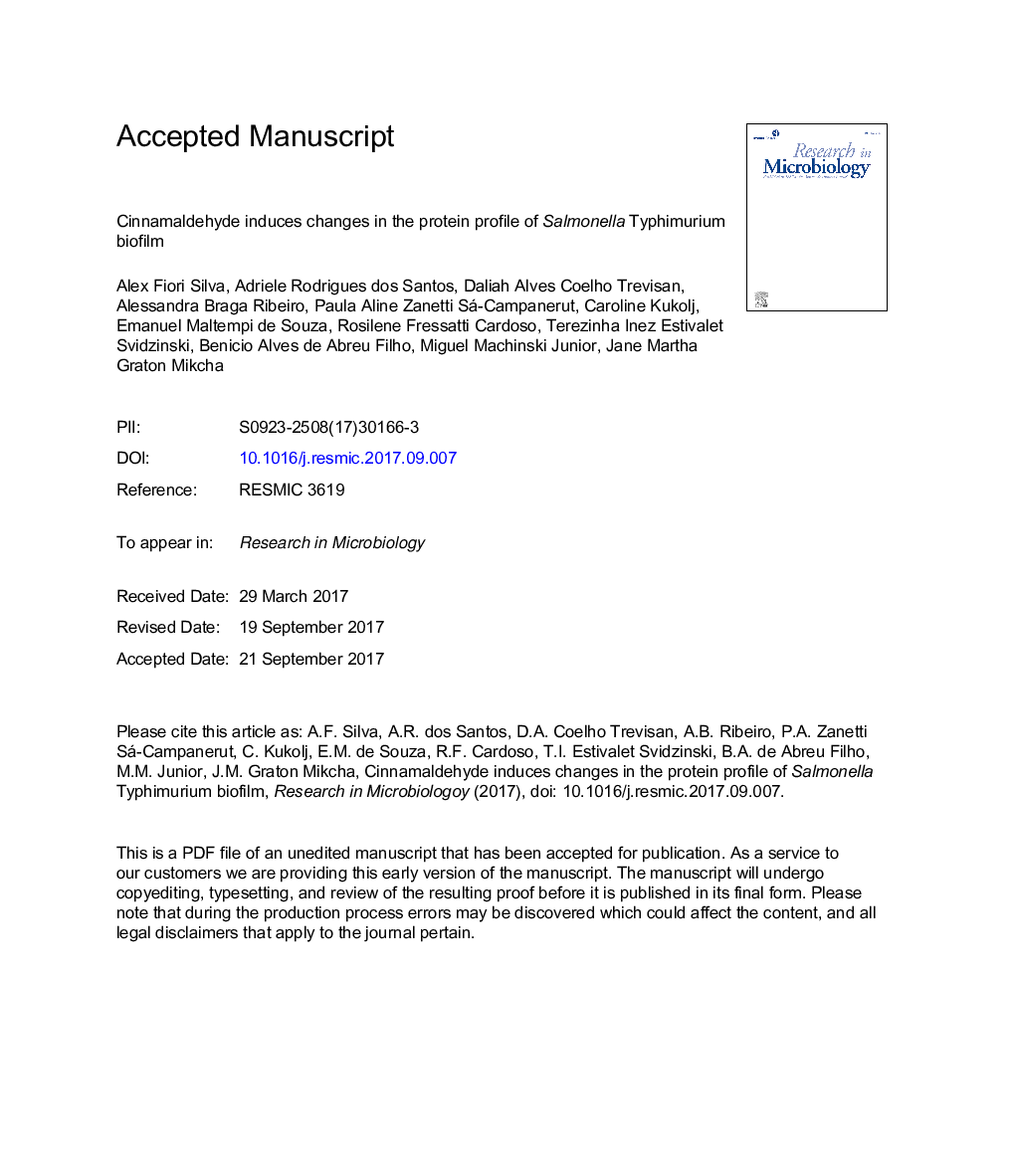| Article ID | Journal | Published Year | Pages | File Type |
|---|---|---|---|---|
| 8842889 | Research in Microbiology | 2018 | 42 Pages |
Abstract
The effect of cinnamaldehyde against biofilm cells of Salmonella Typhimurium ATCC 14028 was evaluated. We also assessed differential protein patterns that were expressed by biofilms compared with planktonic cells and protein expression by cinnamaldehyde-treated biofilms cells. This compound decreased biofilm biomass and metabolic activity of biofilms at both concentrations tested. Cinnamaldehyde treatment reduced the number of attached cells in polypropylene, reflected by colony count and scanning electron microscopy. The proteomic analysis of biofilms compared with planktonic cells indicated that several proteins were upregulated or downregulated, especially proteins that are involved in energy metabolism. Peroxiredoxin, ATP synthase alpha chain protein, conjugal transfer nickase/helicase TraI and elongation factor G were upregulated in untreated-biofilm cells, and their expression decreased as a function of cinnamaldehyde treatment. Cinnamaldehyde had antibiofilm activity, and several differentially expressed proteins identified provide potential and interesting targets to explore new control strategies for S. Typhimurium biofilms.
Related Topics
Life Sciences
Immunology and Microbiology
Applied Microbiology and Biotechnology
Authors
Alex Fiori Silva, Adriele Rodrigues dos Santos, Daliah Alves Coelho Trevisan, Alessandra Braga Ribeiro, Paula Aline Zanetti Campanerut-Sá, Caroline Kukolj, Emanuel Maltempi de Souza, Rosilene Fressatti Cardoso, Terezinha Inez Estivalet Svidzinski,
